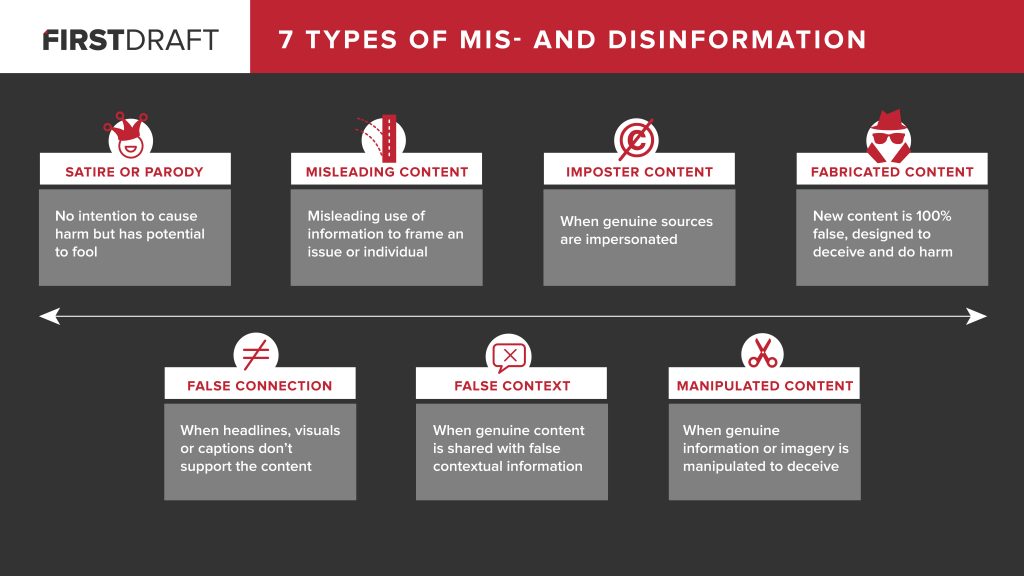
The first step, Stop, is the simplest, and also the most important.
It's crucial to Stop before using or sharing information because
It can be easy to get distracted by all the shiny things when you're in the midst of your research, and so Stop not only serves as a way to make sure you're not sharing weak information, but also as a way to ask yourself if this source answers any of the questions you're researching.
Claire Wardle at First Draft News created this infographic illustrating the different "flavors" of dis- and mis-information. As you can see, "it's complicated!"

Questions for Reflection:
Note: This SIFT method guide was adapted from Michael Caulfield's "Check, Please!" course. The canonical version of this course exists at http://lessons.checkplease.cc. The text and media of this site, where possible, is released into the CC-BY, and free for reuse and revision.